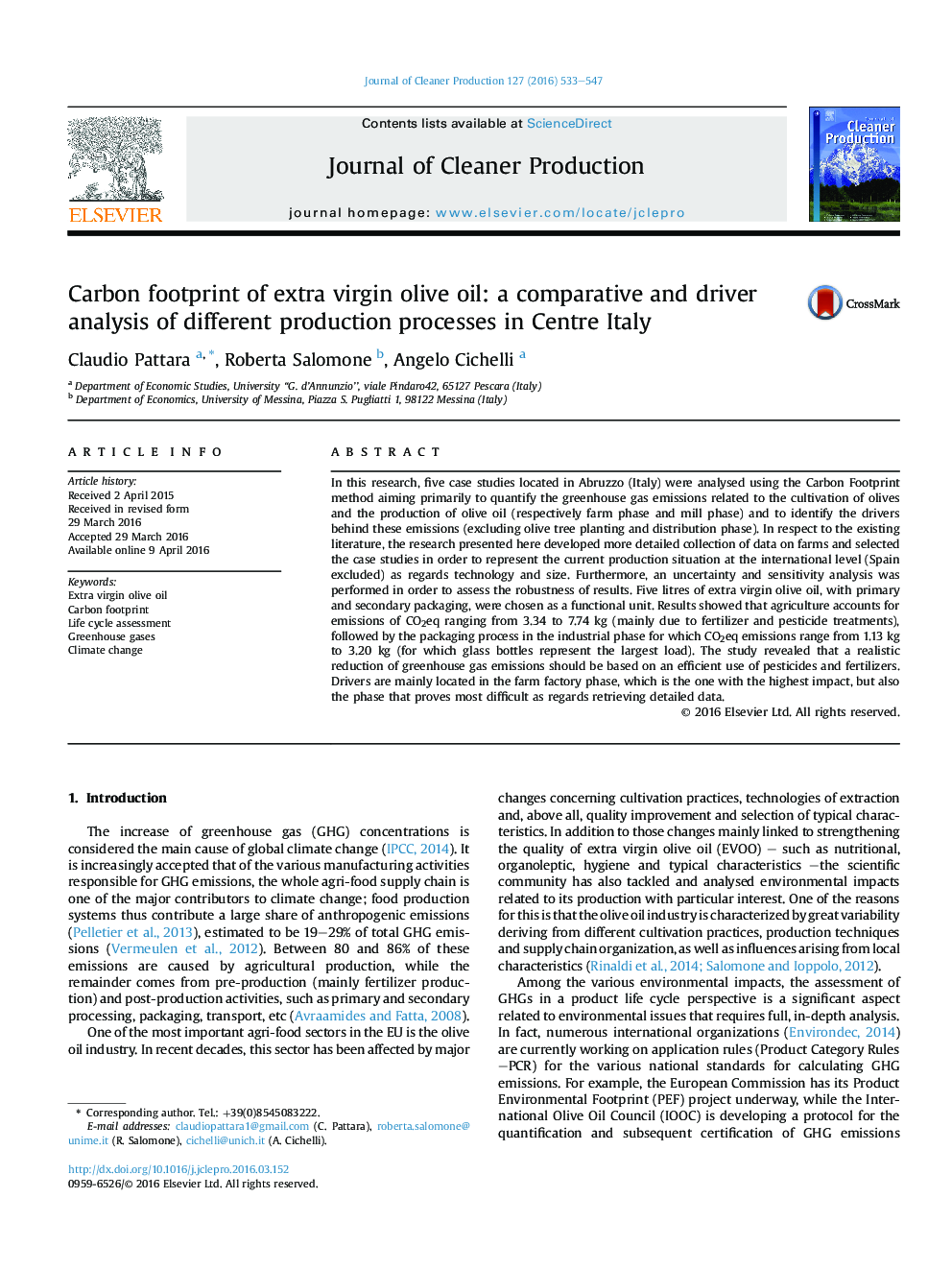| کد مقاله | کد نشریه | سال انتشار | مقاله انگلیسی | نسخه تمام متن |
|---|---|---|---|---|
| 1744110 | 1522122 | 2016 | 15 صفحه PDF | دانلود رایگان |
• Five case studies of olive oil production are compared by Carbon Footprint.
• Agricultural and industrial phases of olive oil production are studied.
• Cultivation followed by the packaging process, is the most impacting phase.
• A hypothetical “best-in-class” case includes all the low emission processes.
• Sensitivity analysis evaluates the effect in energy efficiency and packaging change.
In this research, five case studies located in Abruzzo (Italy) were analysed using the Carbon Footprint method aiming primarily to quantify the greenhouse gas emissions related to the cultivation of olives and the production of olive oil (respectively farm phase and mill phase) and to identify the drivers behind these emissions (excluding olive tree planting and distribution phase). In respect to the existing literature, the research presented here developed more detailed collection of data on farms and selected the case studies in order to represent the current production situation at the international level (Spain excluded) as regards technology and size. Furthermore, an uncertainty and sensitivity analysis was performed in order to assess the robustness of results. Five litres of extra virgin olive oil, with primary and secondary packaging, were chosen as a functional unit. Results showed that agriculture accounts for emissions of CO2eq ranging from 3.34 to 7.74 kg (mainly due to fertilizer and pesticide treatments), followed by the packaging process in the industrial phase for which CO2eq emissions range from 1.13 kg to 3.20 kg (for which glass bottles represent the largest load). The study revealed that a realistic reduction of greenhouse gas emissions should be based on an efficient use of pesticides and fertilizers. Drivers are mainly located in the farm factory phase, which is the one with the highest impact, but also the phase that proves most difficult as regards retrieving detailed data.
Journal: Journal of Cleaner Production - Volume 127, 20 July 2016, Pages 533–547
